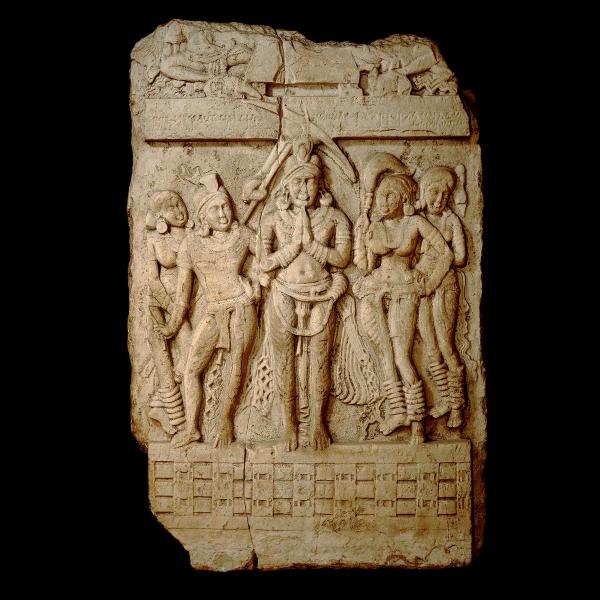Dome panel depicting a royal worshipper
Artwork Details
- Title: Dome panel depicting a royal worshipper
- Period: Satavahana
- Date: second half 1st century CE
- Culture: India, Amaravati Great Stupa, Guntur district, Andhra Pradesh
- Medium: Limestone
- Dimensions: H. 66 in. (167.7 cm); W. 43 9/16 in. (110.6 cm); D. 3 9/16 in. (9 cm)
Display module: H. 76 1/2 in. (194.3 cm); W. 54 1/2 in. (138.4 cm); D. 16 in. (40.6 cm) - Classification: Sculpture
- Credit Line: Lent by British Museum, London
- Rights and Reproduction: © The Trustees of the British Museum
- Curatorial Department: Asian Art
Audio

677. Dome Panel Depicting a Royal Worshipper
JOHN GUY: In this panel before us, there’s no ambiguity. We’re clearly looking at a royal worshiper.
NARRATOR: A scene of pious devotion—we see a royal figure offering himself up to the Buddha.
JOHN GUY: His hands are raised in Anjali, this is the gesture of hands clasped together in respect and supplication. He has an attendant holding an umbrella over his head to indicate his royal status, attended by a princely figure with a club. I’d read that as his general, his marshal protector, and a woman by his side, his queen, his first queen and other attendants.
NARRATOR: The relief carving relays a narrative, but the inscriptions reveal how this object was made.
JOHN GUY: This is quite common to have inscriptions which mention a certain donor from a particular place, and what’s extraordinary is in some cases, we have no idea where those places are anymore. Those names have been lost to history.
NARRATOR: But here, we do. We not only know the donor, but the maker as well. The inscription tells us that this was a gift of a female pupil of a religious teacher. In early Buddhist art in India there is a great importance placed on the role of royal donors and supporters of Buddhism. Royal patronage was critical in the dissemination of Buddhism.
JOHN GUY: The other thing which is fascinating is the predominance of women donors and not only monastics, not only nuns, but also laywomen, women of the community. They played a dominant role, certainly a very prominent role as patrons of Buddhist sites.